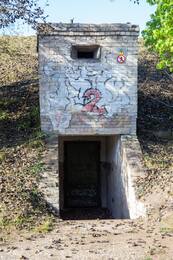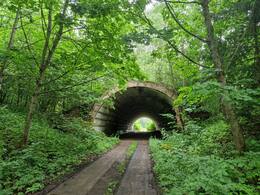Karibų ar Kubos raketų krizė IV Sovietų okupacija
Kubos raketų krizė buvo 13 dienų trukusi SSRS ir Kubos bei JAV konfrontacija 1962 m. spalį.
Tai buvo viena iš pagrindinių Šaltojo karo konfrontacijų ir paprastai laikoma artimiausia, kai karas peraugo į branduolinį konfliktą. Jis prasidėjo 1962 m. spalio 14 d., kai Kuboje buvo aptiktos sovietų branduolinės raketos, galinčios pasiekti JAV teritoriją. Spalio 14 d. buvo pristatytos paskutinės raketos, kurių bendras skaičius išaugo iki 42. Kartu su bombonešio ir povandeninio laivo ginkluote bendras branduolinių galvučių skaičius buvo 160. Krizė baigėsi spalio 28 d., kai Sovietų Sąjungos lyderis Nikita Chruščiovas įsakė atitraukti visas Sovietų Sąjungos branduolines raketas mainais už JAV prezidento Kenneranio, o ne Kenneranio, prezidento Johno F. Kenneranio pažadus Kuba. Amerika taip pat turėjo pašalinti savo raketas iš Turkijos. Siekiant išvengti panašių krizių ateityje, buvo sukurta karštoji linija Maskva-Vašingtonas (vadinamasis „raudonasis telefonas“). Dėl krizės Vakarų šalyse pradėjo vystytis antikarinis judėjimas, kuriam panašias nuomones išsakė ir kai kurie sovietų disidentai.
Iš Latvijos valstybės archyve saugomų dokumentų galima daryti išvadą, kad 1962 metais Latvijos komunistų partijos (CK) CK ir Latvijos TSR Ministrų Tarybos (MK) buvo gauta daugybė TSRS komunistų partijos CK ir SSRS MK sprendimų dėl nenutrūkstamo karinės technikos gamybos planų įgyvendinimo, masinės ginkluotės naikinimo rengimo priemonių dėl karo metu dislokuojamų Vidaus reikalų ministerijos junginių. Tačiau atrodo, kad jie labiau reiškė bendrą SSRS pasirengimą vadinamajam ypatingam laikotarpiui arba tikriems karo veiksmams, o ne trumpalaikę Karibų krizę.
Daugiau informacijos šaltinių
Janis Riekstinys. Per plauką nuo branduolinio karo. Karibų krizė. LA.LV, 2012 spalio 5 d. https://www.la.lv/par-matu-no-kodolkara-kubas-krize-3
Kubos raketų krizė. Vikipedija. https://lv.wikipedia.org/wiki/Kubas_ra%C4%B7e%C5%A1u_kr%C4%ABze
Kategorija: Kubos raketų krizė. Wikimedia Commons. https://commons.wikimedia.org/wiki/Category:Cuban_Missile_Crisis
Susijusios vietos
Požeminiai bunkeriai Valkoje
The Valka bunkers are located in the centre of the city of Valka, on the left side of Ausekļa street, next to the Ādams Tērauds School. Visitors can only view the bunkers from the outside. The Soviet Army bunkers in Valka were among the most secret places in Soviet Latvia only accessible to people with special permits. From 1953 to 1989, they were home to the Soviet Army’s strategic missile communications reserve. Large 16 wheelers were used to deliver massive reinforced concrete blocks for building the bunkers. Once completed, all three bunkers were covered with gravel for additional reinforcement and insulation. The bunkers housed a strategic missile communications reserve subordinated to the Leningrad Communications Centre. Silos with army missiles were controlled from these bunkers. There were 20 such silos in the Valka and Valga area. In October 1962, during the Cuban Missile Crisis, these missiles were combat-ready and aimed at Florida. Legend has it that they were a couple of hours shy from actually being launched. Right next to the Ādams Tērauds School and the underground bunkers is the Swedish (Sheremetyevo) Fortification. The artificial wall of earth was built at the beginning of the Great Northern War, around 1702, to protect Valka against the Swedes. The steepest wall of the fortification faces the village of Ērģeme, while the other side faces Ausekļa street.
Šateikių antžeminė raketinė bazė
Plungės rajone, abipus Šateikių miestelio, esančiuose miškų masyvuose, 1960 m. pastatyta Šateikių antžeminė vidutinio nuotolio raketų paleidimo bazė. Viena iš 4 tokio tipo bazių, veikusių Lietuvoje.
Bazėje buvo įrengtos keturių R-12, R-12U (SS-4 Sandal) vidutinio nuotolio balistinių raketų (vienos populiariausių SSRS) antžeminės paleidimo aikštelės. Šateikių girios karinio dalinio teritorijoje, gelžbetoniniuose angaruose buvo laikomos balistinės raketos. Angaruose stovėjo mašinos, o ant jų platformų buvo sumontuota po vieną R12U raketą. Pagal komandą mašinos turėjusios nuvykti į nurodytą vietą, o raketos paleistos padiktuotų koordinačių kryptimi. Esant signalui, raketas buvo ruošiamasi paleisti į europinės dalies NATO bloko šalis.
1962 m. rugsėjį – 1963 m. sausį, Karibų krizės metu, įtampai tarp JAV ir SSRS pasiekus aukščiausiąjį tašką, branduolinės raketos iš Šateikių raketų paleidimo bazės, traukinių vagonais buvo vežamos į Sevastopolį, kur perkrautos į prekinius laivus nuplukdytos į Centrinę Kubą (Havana). Kariai Kubos salos centre, miškuose statė raketas. Ši operacija buvo vadinama operacija „Anadyris“ – raketų ir kitos ginkluotės gabenimas į Kubą.
Kita data, kai bazėje buvo paskelbta aukščiausio lygio parengtis – 1968 m. įvykęs Prahos pavasaris (įvykiai Čekoslovakijoje), kuomet raketos buvo nukreiptos Vakarų Vokietijos Federacijos pusėn, mat buvo tikimasi, kad NATO bloko šalys ginklu palaikys Čekoslovakijos sukilėlius.
Iš Šateikių antžeminės raketų paleidimo bazės raketos išgabentos apie 1978 m., kai ji jau buvo laikoma pasenusia, o jos išlaikymas – neracionaliu. Bazės uždarymą paskatino ir tai, kad XX a. 8 deš. pab. jau buvo aišku, kad stacionarių raketų paleidimo bazių lokacijos yra identifikuotos JAV žvalgybos.
Įdomu tai, kad vėliau bazėje nuošaliai buvusiame iš išorės keliomis spygliuotomis tvoromis aptvertame nedideliame gelžbetoniniame hermetizuotame pastate, buvo sandėliuojami taktinės paskirties sviediniai su branduoliniu užtaisu, skirti šaudyti iš „Pionų“. Vieno tokio sviedinio sprogstamoji galia vertinama 2 kilotonomis. Palyginimui: branduolinės bombos „Little Boy“ (liet. „Mažylis“), 1945 m. rugpjūčio 6 d. amerikiečių numestos ant Hirosimos (Japonija), išskirtos energijos ekvivalentiška išeiga prilygo 13–16 kilotonų. Šateikiuose jie galėjo atsirasti 1981 m. pabaigoje.
Šateikiuose buvo dislokuota ir 384-oji didelio galingumo artilerijos brigada. Brigados žinioje ir buvo savaeigės 203 mm kalibro haubicos 2S7 „Pion“. Jų paskirtis – atakuoti priešo užnugarį, naikinti svarbius objektus 47–55 kilometrų atstumu. Šie taktinės paskirties sviediniai su branduoliniu užtaisu iš Lietuvos teritorijos galėjo būti išgabenti 1992 metų liepos mėnesį. Išvedamos Rusijos Federacijos kariuomenės pervežimų geležinkelio transportu plane pateikta informacija, kad 36-iuose dengtuose vagonuose išvežtas 384-osios didelio galingumo artilerijos brigados cheminis turtas. Veikiausiai tai ir buvo branduoliniai sprogmenys.
Apleidus raketų paleidimo bazę, statiniai sunyko. Šiuo metu lankantis teritorijoje dar galima surasti 6 gelžbetoninių sandėlių (angarų) liekanas, taip pat bebaigiančias užželti krūmais buvusias antžemines raketų paleidimo aikšteles. Visa buvusios bazės teritorija iki šiol tebėra išraizgyta betono plokštėmis dengtų kelių tinklu.
Susijusi istorija
Branduolinės ginkluotės pėdsakais Šateikių girioje
1960-1978 m. laikotarpiu Plungės rajone, Šateikių kaimo miškuose veikė antžeminė raketų paleidimo bazė, kurioje buvo dislokuotos vidutinio nuotolio termobranduolinės raketos R12U. Raketas išgabenus, bazėje dislokuota 384-oji didelio galingumo artilerijos brigada. Jos žinioje buvo savaeigės 203 mm kalibro haubicos 2S7 „Pion“ ir daugybė įvairios kitos ginkluotės, kuri kainavo gyvybes.






